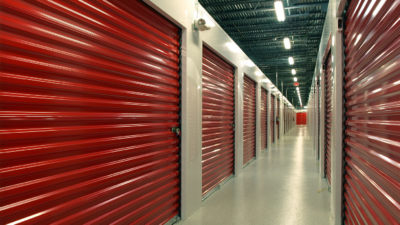Occupier activity across the Unites States continues to be robust, but not on par with the same time a year ago in bulk industrial space 100,000 square feet and larger. In the first three quarters of 2019, 1,507 industrial (warehouse, manufacturing, flex) new leases, renewals and user sales were transacted, totaling 363.6 million square feet, an 18.6% decline compared with this time last year. The average size of a bulk transaction was 241,628 square feet, much lower than the 261,000 square feet average this a year ago.

While e-commerce-only occupiers like Amazon get a lot of press, they only made up 10% of the transactions signed the past 12 months. The top occupier remains third-party logistics and packaging companies (3PLs), who surpassed the 100 million square feet mark for transactions and increased its market share to 27.7%. 3PLs, who offer logistics and warehousing services for retailers and wholesalers who choose to outsource, remain the top occupier of industrial space for a variety of factors including cost savings for retailers and wholesalers. Recent economic trends, which we highlighted in our just-released blog on economic fundamentals, have also been a factor in the increased activity. While 3PLs were the top overall occupier, the Food, Beverage, and Pet Supplier industry grew the most compared with the previous year, at a rate of 4.2%, finishing with 35.1 million square feet of transactions signed.

E-commerce-only occupiers continue to need buildings much larger than other occupier types. The average e-commerce transaction the past year totaled 469,243 square feet, nearly double the overall average transaction size for a bulk industrial building, but it was much lower than the 500,906 square foot average at this time last year because of a decline in transactions larger than one million square feet. For the 19th consecutive quarter, Amazon was the top e-commerce and overall occupier of industrial space, with a year-to-date total of 14.6 million square feet.

The Midwest beat out the Southeast as the top region of choice for bulk industrial occupiers, with 30% of the bulk transactions signed in the region. Both industrial and manufacturing occupiers continue to move into the market in droves because of the region’s pro-business climate and significant logistics advantages. The Southeast region is still doing well as occupiers move into the region to support the growing population. The West region remains in third, thanks to continued strong demand in the Inland Empire, which remains one of the top markets in the country for bulk leasing activity.

Transaction volume for bulk industrial space will remain strong over the next 12 months because of projected stable economic fundamentals and an increased need for modern industrial space. While 3PL and retail-related distribution volume will remain robust, look for the strong growth that was showcased in the Food and Beverage industry to continue, as many of these occupiers are looking to expand and modernize its distribution and manufacturing networks. Population growth will keep occupiers in all industries looking at space in the Southern and Western portions of the U.S. while improvements and expansions of inland and coastal logistics hubs as well as strong domestic manufacturing in the Northeast and Midwest will keep demand strong in these regions for the foreseeable future.
Company Type Description:
- Construction, Improvement, and Home Repair – Warehousing and distribution of materials used in residential and commercial construction, improvements and repair, could contain some e-commerce components.
- Data Centers, Tech, and R&D – The use of industrial space for data centers and non-pharmaceutical R&D purposes.
- E-Commerce Only – Warehousing and distribution of product that is ordered online and shipped directly to the end consumer only.
- Food, Beverage, and Pet Supply – Manufacturing, warehousing, and/or distribution of food and beverage related products. Could contain some e-commerce or manufacturing components.
- Furniture and Appliances – Warehousing and distribution of retail and/or wholesale furniture and appliance products. Could contain some e-commerce and or manufacturing components.
- General Retail and Wholesale – The warehousing and distribution or retail and/or wholesale products not listed in any of the other categories. Could contain some e-commerce or manufacturing components.
- Manufacturing – Industrial space used for manufacturing and/or storage of raw materials and equipment used in the manufacturing of non- automobile related products.
- Motor Vehicles, Tires, and Parts – The warehousing, manufacturing and/or distribution of motor vehicles, tires, and related parts and materials.
- Third-Party Logistics and Packaging – Third-party logistics (3PL) and packaging of a wide variety of products, could contain some e-commerce components.

 Colliers Insights Team
Colliers Insights Team
 Craig Hurvitz
Craig Hurvitz
 Aaron Jodka
Aaron Jodka